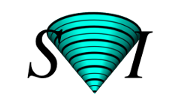™Huygens Twin Slicer
synchronize views of multiple images, measure distances, plot line profiles
Huygens Twin Slicer is a very flexible visualization tool in Essential, Professional and Localizer that allows you to synchronize and inspect views of two or three (different) images side-by-side. Multiple channels can be visualized in one view using different color schemes and LUTs. (Auto)contrast, gamma, and brightness can be quickly selected and adjusted. With a few mouse button clicks, you can measure intensities, sizes, distances, radius, FWHM values, line profiles, and more. In Basic Mode image comparison is extremely easy as all viewing settings are applied to both views, whereas the Advanced Mode allows you to link (synchronize) or unlink individual viewing parameters. This 'Linking' option facilitates easy comparison of (the same) image data at different zoom levels, in different colors, as a slice and MIP, or with for example different contrast/brighness setting.
Compare images easily
Optimize contrast, colors & more
Quick measurements
Visualize and Compare images
The Twin Slicer offers many visualization possibilities. With automatic linking, you can compare two images without any difficulties.
Compare images Slice through Z and Time Change orientation Zooming Animate through Z and Time Different projection modes Automatic panning Automatic linking Data plotter Change colors Tune brightness and contrast
Tuning the Brightness & Contrast
The brightness and contrast controls are accessible in the Contrast panel. The brightness can be changed per channel, or for all channels at once (master).
For more advanced gamma options, click on the Contrast Editor cartoon which opens a new interactive window. Here, you can manually change the image contrast for all channels at once or for each channel individually
The contrast editor can be used to fine-tune the contrast settings in various visualization tools in Huygens, including the twin slicer. It can be found by clicking the little interactive graph under the “Contrast” tab.
Change Colors & Look Up Table Editor
Advanced mode offers custom colors in addition to the basic color schemes. You can manually select colors for each channel using the color picker. For more control, the custom look-up table (LUT) maps image intensities to colors, helping with clear visualization and intensity comparisons. The LUT editor lets you load, view, and edit your own color schemes. LUTs are also used in image rendering to speed up processes and enable complex color coding. To access the LUT editor, open a slicer or MIP renderer, go to the “Channels & Colors” tab, set the color mode to “Custom look-up table,” and click the interactive graph.
Measurements
Within the Twin Slicer, it is possible to perform the most common basic measurements on the images. For example, you can set a marker to obtain the exact coordinates and intensity values of a certain point in a (ultichannel) image. It is also possible to add a ruler to the image, to determine the distance within a certain part of the image. The slicer will also show the intensity profiles of each channel along the ruler in a separate plot. The Twin Slicer allows plotting of the intensity profiles of all the selected channels of one or of two images at once.
